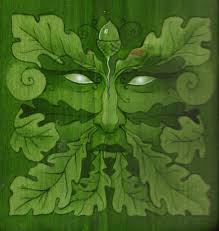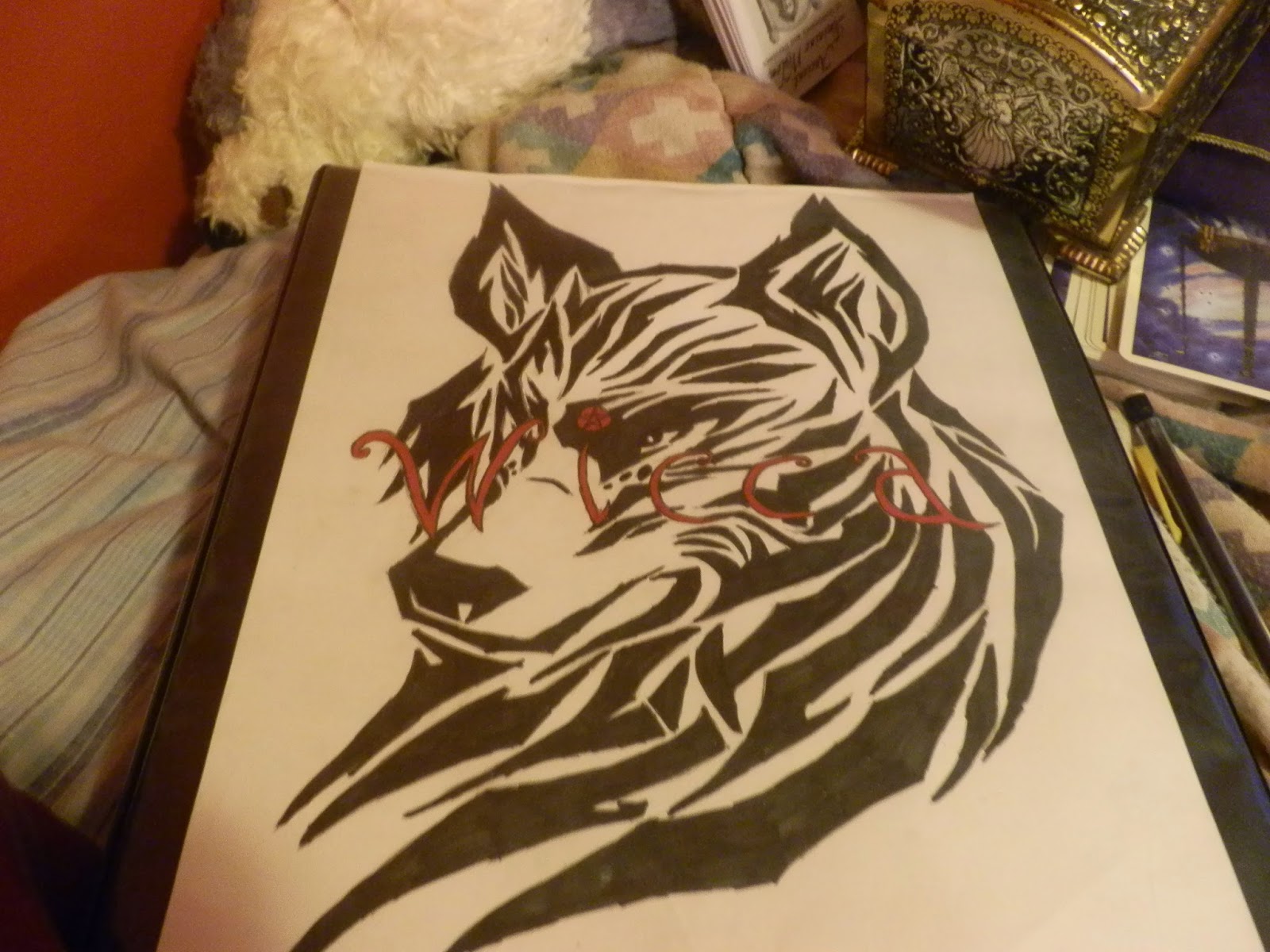There are 8 wiccan holidays; Samhain, Beltane, imbolc, Lughnasadh, yule, Ostara, Litha, & Mabon. Each one has a different story behind it; but I'll cover those later. For now it's why and when:
SamhainSamhain, (pronounced SOW-in, SAH-vin, or SAM-hayne) means "End of Summer", and is the third and final Harvest. The dark winter half of the year commences on this Sabbat.
It is generally celebrated on October 31st, but some traditions prefer November 1st. It is one of the two "spirit-nights" each year, the other being Beltane. It is a magical interval when the mundane laws of time and space are temporarily suspended, and the Thin Veil between the worlds is lifted. Communicating with ancestors and departed loved ones is easy at this time, for they journey through this world on their way to the Summerlands. It is a time to study the Dark Mysteries and honor the Dark Mother and the Dark Father, symbolized by the Crone and her aged Consort.
BeltaneMany Wiccans and Pagans celebrate Beltane. It is one of eight solar Sabbats. This holiday incorporates traditions from the Gaelic Bealtaine, such as the bonfire, but it bears more relation to the Germanic May Day festival, both in its significance (focusing on fertility) and its rituals (such as May pole dancing). Some traditions celebrate this holiday on May 1 or May day, whiles others begin their celebration the eve before or April 30th.
Beltane has long been celebrated with feasts and rituals. The name means fire of Bel; Belinos being one name for the Sun God, whose coronation feast we now celebrate. As summer begins, weather becomes warmer, and the plant world blossoms, an exuberant mood prevails. In old Celtic traditions it was a time of unabashed sexuality and promiscuity where marriages of a year and a day could be undertaken but it is rarely observed in that manner in modern times.
ImbolcAs with all Old Tradition observances, this holiday is usually celebrated beginning at sundown on February 1 and continuing through the day of February 2. Imbolc means in the belly of the Mother because that is where seeds are beginning to stir as it is Spring.
Another name for this holiday is Oimelc, meaning milk of ewes since it is also the traditional lambing season in the old world. Herd animals have either given birth to the first offspring of the year or their wombs are swollen and the milk of life is flowing into their teats and udders. It is the time of Blessing of the seeds and consecration of agricultural tools. It marks the center point of the dark half of the year.
This holiday is especially sacred to the Celtic Fire Goddess, Brigit, patron of smithcraft, healing, midwifery, and poetry. It is the festival of the Maiden, for from this day to March 21st, it is her season to prepare for growth and renewal. The Maiden is honored, as the Bride, on this Sabbat. Straw Brideo'gas (corn dollies) are created from oat or wheat straw and placed in baskets with white flower bedding. Young girls then carry the Brideo'gas door to door, and gifts are bestowed upon the image from each household. Afterwards at the traditional feast, the older women make special acorn wands for the dollies to hold, and in the morning the ashes in the hearth are examined to see if the magic wands left marks as a good omen. Brighid's Crosses are fashioned from wheat stalks and exchanged as symbols of protection and prosperity in the coming year. Home hearth fires are put out and re-lit, and a besom is place by the front door to symbolize sweeping out the old and welcoming the new. Candles are lit and placed in each room of the house to honor the re-birth of the Sun.
LughnasadhAt Lammas, sometimes called Lughnasadh, it's time to celebrate the first harvest of the year, and recognize that the hot summer days will soon come to an end. The plants of spring wither and drop seeds to ensure future crops. Grains are ready to be harvested and the fruits are ripe for picking. We can give thanks for the food on our tables.
Lughnasadh means the funeral games of Lugh (pronounced Loo), referring to Lugh, the sun god. However, the funeral is not his own, but the funeral games he hosts in honor of his foster-mother Tailte. For that reason, the traditional Tailtean craft fairs and Tailtean marriages (which last for a year and a day) are also celebrated at this time.
YuleThe date varies from December 20 to December 23 depending on the year in the Gregorian calendar. Yule is also known as the winter solstice in the northern hemisphere and the summer solstice in the southern hemisphere due to the seasonal differences.
Yule, (pronounced EWE-elle) is when the dark half of the year relinquishes to the light half. Starting the next morning at sunrise, the sun climbs just a little higher and stays a little longer in the sky each day. Known as Solstice Night, or the longest night of the year, the sun's "rebirth" was celebrated with much joy. On this night, our ancestors celebrated the rebirth of the Oak King, the Sun King, the Giver of Life that warmed the frozen Earth. From this day forward, the days would become longer.
OstaraAs Spring reaches its midpoint, night and day stand in perfect balance, with light on the increase. The young Sun God now celebrates a hierogamy (sacred marriage) with the young Maiden Goddess, who conceives. In nine months, she will again become the Great Mother. It is a time of great fertility, new growth, and newborn animals.
The next full moon (a time of increased births) is called the Ostara and is sacred to Eostre the Saxon Lunar Goddess of fertility (from whence we get the word estrogen, whose two symbols were the egg and the rabbit.
Litha (Also known as Midsummer)Although the name Litha is not well attested, it may come from Saxon tradition -- the opposite of Yule. On this longest day of the year, light and life are abundant. At mid-summer, the Sun God has reached the moment of his greatest strength. Seated on his greenwood throne, he is also lord of the forests, and his face is seen in church architecture peering from countless foliate masks.
MabonMabon, (pronounced MAY-bun, MAY-bone, MAH-boon, or MAH-bawn) is the Autumn Equinox. The Autumn Equinox divides the day and night equally, and we all take a moment to pay our respects to the impending dark. We also give thanks to the waning sunlight, as we store our harvest of this year's crops. The Druids call this celebration, Mea'n Fo'mhair, and honor the The Green Man, the God of the Forest, by offering libations to trees. Offerings of ciders, wines, herbs and fertilizer are appropriate at this time. Wiccans celebrate the aging Goddess as she passes from Mother to Crone, and her consort the God as he prepares for death and re-birth.
Various other names for this Lesser Wiccan Sabbat are The Second Harvest Festival, Wine Harvest, Feast of Avalon, Equinozio di Autunno (Strega), Alben Elfed (Caledonii), or Cornucopia. The Teutonic name, Winter Finding, spans a period of time from the Sabbat to Oct. 15th, Winter's Night, which is the Norse New Year.


